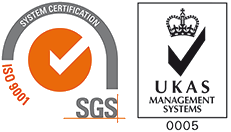3 Simple Principles That Will Help Your Business Adapt to the Coronavirus Crisis
When, just three years ago, Daniel Newman and I wrote Building Dragons: Digital Transformation in the Experience Economy, we approached the topic of digital transformation from a technology disruption perspective. The question we aimed to answer was “how can you use technology to help your business adapt to a fast-changing technologypowered world?” Aside from outlining which technologies to focus on and how to integrate them into businesses of all sizes, we also focused on how mature or otherwise incumbent companies could borrow principles and processes from disruptive startups to jump start their business ahead of their competitors. Thinking back to the principles and methodologies outlined in the book, I am suddenly aware that most of those principles also apply to a very different kind of disruption – the one currently sweeping across the globe: The Coronavirus COVID-19 pandemic.
At its core, disruption is disruption. It doesn’t matter if it’s technological, economic, environmental, political, or a pandemic. Disruptions will come, and the response for businesses is always the same: Adapt or die. Part of my role here is to help you adapt, and not just adapt but adapt better and faster than your competitors. Today is no different from any other day in that regard, so let me share a few valuable but simple observations that will hopefully be helpful as you continue to plan for the next few months of disruption as a result of the COVID-19 outbreak.
How to Adapt Your Business to a New Reality as a Result of the Coronavirus COVID-19 Crisis It’s clear the Coronavirus COVID-19 pandemic is our new reality, and that for at least the near term, disruption of all kinds is a given. As a result, business leaders need to figure out where to go from here. Based on our experience with disruption, transformation, and business agility, as well as our research on digital transformation of all kinds, we’ve prepared an outline of some next steps that will help you and your business adapt quickly to this new reality:
- Remember that fear is a liar. Look beyond fear and remain focused in times of uncertainty Fear is helpful when it comes to triggering an initial survival ref lex. If you are a character in a horror movie, fear tells you not to go down into the dark, spooky basement. If you are about to cut through a dark alley to get to where you are going a little faster but see some suspicious shadows lurking there, fear tells you to take the long way. There are a time and a place for fear, but fear is only effective when very short-lived. Fear should guide immediate, very short-term decisions, not long-term decisions. Moreover, living and operating in a constant state of fear is absolutely the worst way to ensure that you will consistently make good decisions.
During times of disruption, fear is inevitable: Will my business survive this? If conditions don’t improve, will I be able to make payroll next month? Should I take drastic measures now, while I still can? This is a natural process and those are all valid questions. However, what Daniel and I learned from our research is that as these questions cannot be answered empirically, they cannot form the basis for a survival and adaptation strategy. They are based on fear, not on process, and therefore only work to reinforce negative assumptions. They serve no practical purpose whatsoever. What we do know is that companies with the best data and the best data analytics are better equipped to make solid decisions, while companies with little data, or unusable data, or inadequate analytics capabilities, are least equipped to make solid decisions. When I look at the above set of questions, what I see are questions that don’t seek to collect data or lead to any useful insight. They are just fear taking hold. As a business leader, it may be more useful to rephrase those questions so that they will be less fear-based and more process-driven:
- What can I do to make sure our business survives this?
• If external conditions continue on this new trajectory, how can my team and I start adapting to new market conditions right now?
• What measures should my leadership team and I take immediately, next week, two weeks from now, and a month from now, to give my business the best possible advantage?
These are the questions that a business leader should be working to answer regardless of what caused the disruption: Technology disruption, political upheaval, natural disasters, financial crises, and so on. The Coronavirus pandemic is no different from any other type of disruption in that regard.
- Finding the answers to your most critical questions as fast as you can will help you make better decisions for your business well ahead of the rest of your industry
The better the data, the better the insights, and the better the insights, the better the decisions. This is the entire premise behind every company’s investment in Big Data and Analytics, and the market is filled with evidence that good, timely, well-analyzed intelligence is better than none, or worse, incomplete, outdated, poorly-analyzed intelligence. What this tells us is that making business decisions without first having a solid foundation of information and insight to guide that decision is akin to playing Russian roulette with your business.
If, as a business leader, you are currently unable to answer fundamental questions about what comes next or what you should do, stop and hit the reset button. “I don’t know what comes next or what I should do” should be replaced by “where and how can I build (or tap into) real-time intelligence capabilities that will answer my questions?”
Here is a basic model to solve your immediate “I don’t know” problem:
What is happening outside my business ecosystem?
If your company is large enough, you may want to create a situation room tasked with monitoring breaking news, policy shifts, and market behaviors.
What is happening inside my business ecosystem?
You may also want to create a crisis analytics team tasked with developing new data sets that will help you better understand, in real time, how your customers and clients are reacting to the disruption. This will help you identify immediate and emerging threats and opportunities that your business may want to prioritize.
What can/should we do to adapt to these disruptions? Consider c reating a d iverse and fastflowing creative problem-solving group to tackle threats, opportunities, and new challenges as fast as you uncover them. This group should be crossfunctional, highly collaborative, and capable of quickly delivering options to decision-makers.
What can/should we do to respond to these disruptions? You will also want to create a leadership / decision-making group tasked with evaluating the options delivered by the creative-problem-solving group and working with you to enact them quickly.
What can/should we do to make sure that the way we are adapting to these new challenges are working and not causing more harm than good? Lastly, you will want to create a quality control group to monitor and measure the effectiveness of your new programs and initiatives against stated objectives. Based on the data it is able to collect and on its analysis and observations, this group will recommend adjustments to the process to optimize outcomes, and, on occasion, will pull the plug if a program indeed causes more problems than it solves.
What if my company isn’t large enough to build something like this? W hat i f y our c ompany i sn’t big enough to build something like this? The good news is that help is available. You can hire a business management firm that specializes in digital transformation or change management, partner with a technology or IT services firm, and reach out to industry analysts who can help you accelerate your response by helping you build out the process, technology, and best practices pieces of your adaptation puzzle as quickly as you can.
- Technology vs. Process: Building and enacting new practices as fast as possible is how your business will get ahead of this crisis Just as we observed when the challenge facing companies was adapting to technology disruption, the adaptation puzzle with the Coronavirus COVID- 19 crisis has two distinct but interconnected parts: Technology and Process. And for one to yield positive results, it has to be married to the other in the right way. Just throwing technology at a problem won’t be enough. You need both.
Because of the need for social distancing to help slow down community transmission, remote collaboration is an obvious example of a technology and process adaptation that your business will have to focus on in the coming weeks.
Allowing workers to work remotely isn’t new, but many companies haven’t been as quick to adopt the work-from-anywhere model that younger generations of workers—actually make that large swaths of workers across multiple generations—have been immersed in and grown increasingly fond of. It should come as no surprise, however, that companies that have already adopted flexible productivity and collaboration tools and processes will adapt to disruptions caused by the Coronavirus COVID-19 outbreak faster and with less friction than companies that had, until now, resisted allowing workers to work and collaborate from anywhere. Therefore, organizations already leveraging technologies like Zoom, Slack, Cisco Webex Teams, Microsoft Teams, GoToMeeting, and others like them, to enhance and enrich collaboration and productivity, and have already spent months, if not years, developing best practices around their use, already feel far less disrupted than organizations that are only now trying to integrate them into their workflows as fast as they can.
Different industries and businesses have unique challenges, and so your technology and process needs may be very different from a retailer, a healthcare provider, a car rental company, a hotel, an educational institution, a law firm, or a brewery. As technology use case is unique, which technologies you choose, and which processes you build around their use will be unique to your business. But no matter what your business and operational needs may be, I can assure you that the technology solutions you need to access better data, automate key processes, enhance collaboration and productivity between your team members and partners, train workers remotely, ship product, address shifting customer concerns and needs — and adapt to this sudden and frightening maelstrom of disruption — are out there already. The faster you discover and deploy these solutions — preferably with the right processes to make them work well for you — the faster you will be able to weather whatever the next 6 to 36 weeks may throw at you.
The only difference between doing this now versus doing it in response to technology disruptions in your industry is that this timeline is significantly accelerated. What you may have been able to take 8 to 12 months testing and building a year ago, you may have to test and build in 8 to 12 days. Be aware of that. Speed is of the essence now, more than ever.
Source: https://futurumresearch.com/








